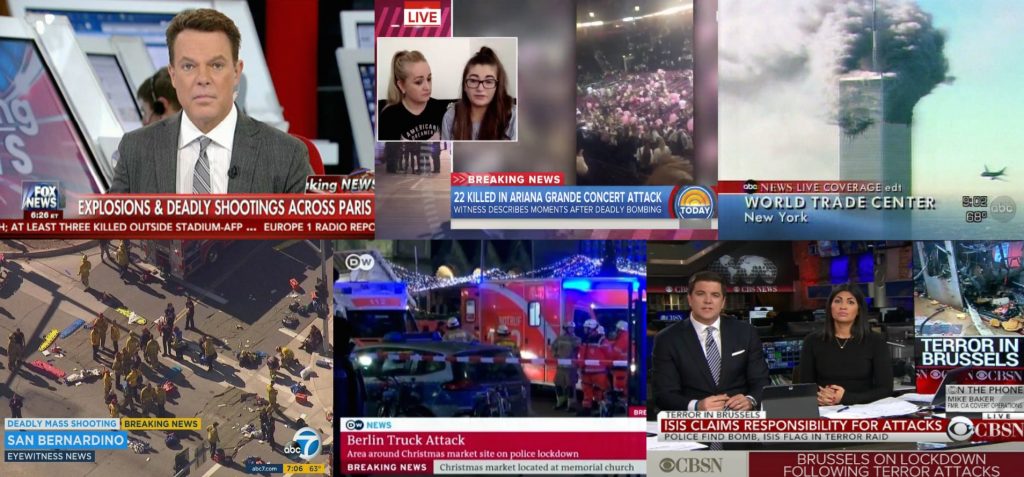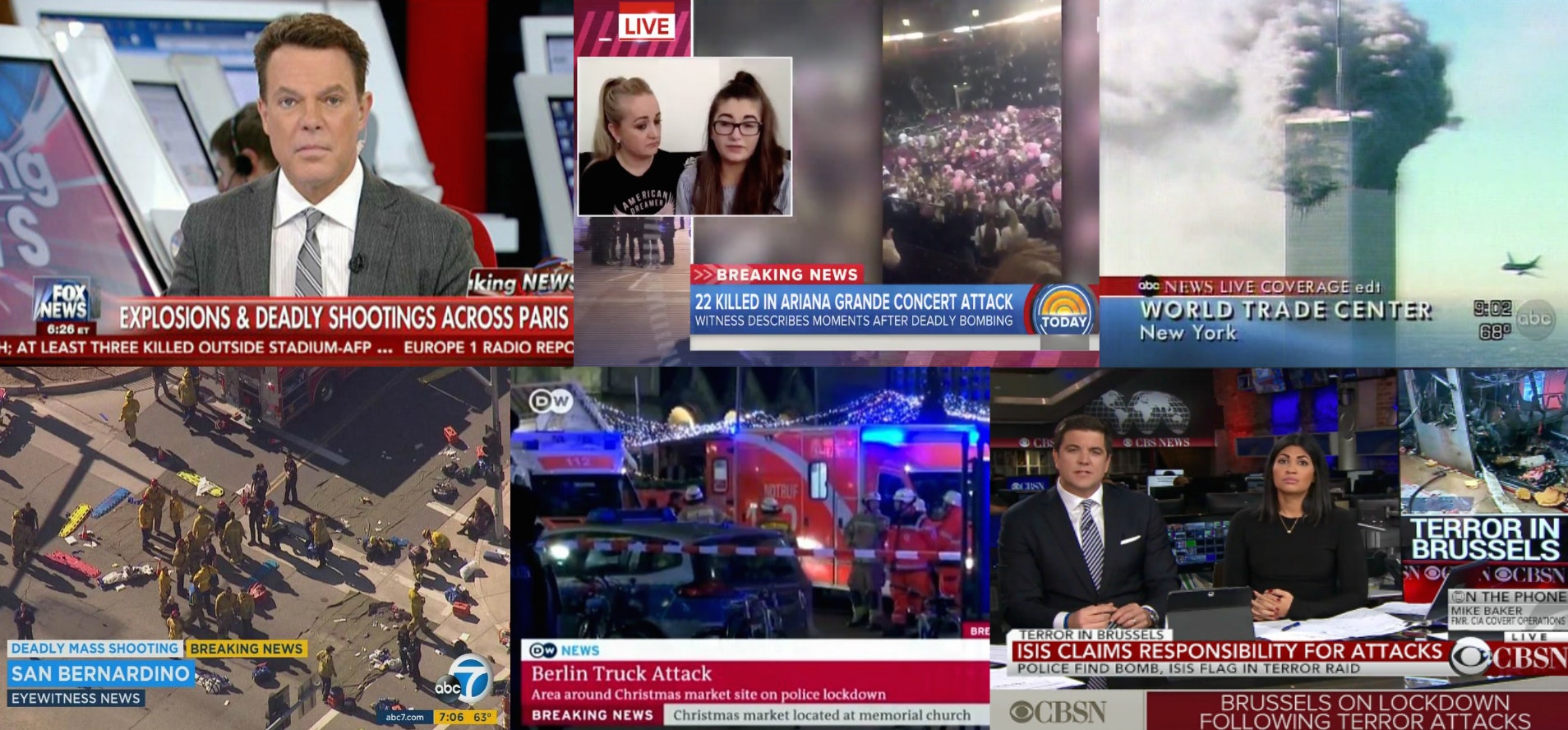Written by Tess Poplawski
Terrorism. It’s disturbingly becoming a part of our everyday existence. It appears, long gone are the days of contained daily news stories and uplifting social media content. The manner in news is now being broadcast and how people use online networking platforms is compromising the integrity of its original purpose.
Is the media now becoming an integral part of terrorism’s marketing and propaganda strategy and, are we as a society giving oxygen to their criminal footage and promoting their ideology with our double clicks?
Journalism
As members of the Fourth Estate, it is a journalist’s role to provide clear, accurate and fast information to inform the public. When it comes to reporting on terrorism, a journalist’s role does not change. If anything, it becomes more vitally important. At present, with the increasing number of terrorist attacks, it is somewhat inevitable, and sadly too familiar, the way that journalists and the media in general ‘cover’ terrorism.
Breaking news headlines circulate through the internet at a whiplashing speed. Images and videos of mindless bombings, terrified souls and horrific bloodshed are quickly found on social media and used for universal, uncensored publication. Newsrooms solicit witnesses for vilification and before we realise it, journalists are reporting live just metres from the ground zero carnage.

This cycle of reporting on terrorism has become increasingly scrutinised. Many, including the Chair of Journalism Ethics for Poynter, Indira Lakshmanan, suggest that, “by playing this endless loop of the same images of terrified people running away from the scene of an attack, we are essentially playing into the hands of terrorists”. Similarly, author of Les larmes de Charlie…et Cie, Michel Fize states that “when you dramatize excessively the collective emotion you encourage criminal actions,”
So… are we glorifying terrorism? Are we assisting terrorists in spreading their message by allowing so much publicity on their executed attacks? Has the time come to change the way in which we report on terrorism?
The United Nations Educational, Scientific and Cultural Organization (UNESCO) evidently realised how journalism was a key player in ‘marketing’ terrorism and released a handbook in 2017 titled “Terrorism and the Media”. Written by Jean-Paul Marthoz, the handbook is designed for journalists to outline how they can inform the public on terrorism while avoiding to help terrorists achieve their aim of dividing societies and spreading their message of hate.
But is a handbook enough? The old adage goes – all publicity is good publicity…but the real question is “for whom”: the ratings, the terrorists, the media moguls? Responsible and factual reporting is fundamentally the Hypocritic Oath of journalism.
Social media
Some social media platforms don’t address the spreading of hate speech and vilification. This has also come under much deserved scrutiny. The introduction of the internet and social media was a worldwide phenomenon. Never before, was communicating to the masses so immediate and so easy. However, now in an era of increasing terrorism, the once, favoured advantages of the internet and social media are now, questionable disadvantages.
A study conducted by Gabriel Weimann from the University of Haifa concluded that nearly 90% of organised terrorism on the internet takes place via social media. Social media platforms such as Facebook, Twitter and other internet forums are preferred channels of communication for terrorists simply because it is inexpensive, easy, efficient, effective and often non-detectable. Such platforms allow terrorism, individually or collectively, to disseminate messages, recruit and groom potential members. As a result, terrorist organisations nearly and solely depend on access to open media systems of global democratic countries to spread their message and showcase their actions.
Not only are they taking advantage of the ability to communicate with people through direct messaging, but they are now using certain platform functions to reiterate their message to the masses.
Facebook’s live streaming function is popular among its users allowing them to broadcast footage to the public in real time. However, it has been recently criticised following the recent Christchurch terrorist attacks. Normally, it is not until after a terrorist attack occurs that we see footage of the victims and the carnage, which is often responsibly and respectfully edited prior to publication. However, the Christchurch attack was horrifically different. The ‘gunman’ live streamed his killings on Facebook. It was viewed close to 4,000 times before it was removed.
New Zealand Prime Minister, Jacinda Ardern acted with commendable authority and immediately called for social media platforms, like Facebook to take increased responsibility for any material that they allow to be uploaded and viewed.
“We cannot simply sit back and accept that these platforms just exist and that what is said on them is not the responsibility of a place where they are published,” she said in her speech to New Zealand’s Parliament the week following the shootings. “They are the publisher, not just the postman. There cannot be a case of all profit, no responsibility.”
Unfortunately, media and acts of terrorism are now inextricably linked. But as global citizens, we can all play a part in trying to prevent and stop the spread of heinous crimes of hate and vilification. As journalists, we must collectively be vigilant in how and when we report on terrorist attacks. Social media magnates need to urgently review their policies on such reporting and content sharing and implement robust internal controls to restrict violent and overwhelmingly damaging footage being publicised.

